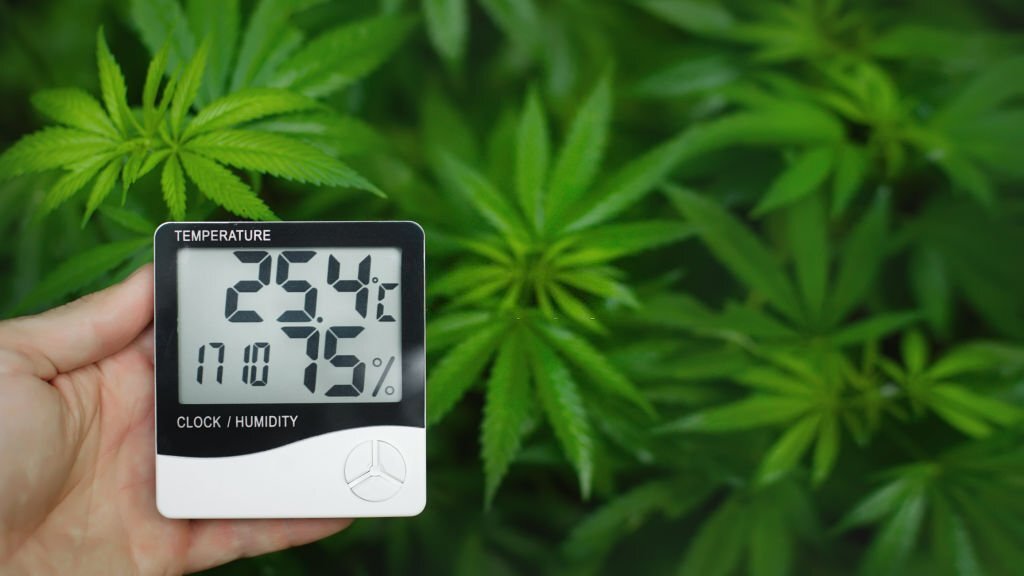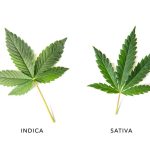🔥 Website for Sale - Contact Us
Cannabis cultivation requires careful attention to various environmental factors to ensure healthy plant growth and maximize yields. One such critical factor is humidity control within the grow space. Proper management of humidity levels plays a vital role in the overall success of your cannabis cultivation efforts. In this guide, we explore the importance of humidity control in cannabis grow tents, discuss how to choose the Best Dehumidifiers for Grow Tents, and provide you with a comprehensive 2023 buyers guide to help you make an informed decision.
II. Factors to Consider When Choosing a Dehumidifier for Your Grow Tent
A. Grow Tent Size and Capacity
When selecting the ideal dehumidifier for your cannabis grow tent, considering the size and capacity of your grow space is crucial. The volume of air in your tent significantly influences the type and capacity of the dehumidifier needed for effective humidity management.
Calculating Tent Volume: First, determine the volume of your grow tent to identify the appropriate dehumidifier size. Multiply the length, width, and height of your tent (in feet) to obtain the cubic feet of air requiring dehumidification.
Dehumidifier Capacity: Dehumidifiers are typically rated by how many pints of moisture can be removed from the air within 24 hours. Note that larger grow tents may necessitate multiple dehumidifiers or a more powerful unit to effectively maintain optimal humidity levels.
Accounting for Plant Quantity and Growth Stage: The number and growth stage of plants in your grow tent will also impact humidity levels. As plants grow and undergo transpiration, they release moisture into the air. A higher number of plants or plants in the flowering stage will generate increased humidity levels, potentially requiring a more robust dehumidifier.
B. Dehumidification Rate and Efficiency
When choosing a dehumidifier for your grow tent setup, it’s essential to consider the dehumidification rate and efficiency. These factors will determine how well the dehumidifier can maintain optimal humidity levels in your grow space while minimizing energy consumption.
Dehumidification Rate: The dehumidification rate refers to the number of pints of moisture the device can remove from the air within 24 hours. It’s crucial to select a unit with a dehumidification rate that matches the humidity requirements of your grow tent. A higher rate may be necessary if your grow space has higher humidity levels or if the dehumidifier will be used during the more humid flowering stage of your cannabis plants.
Energy Efficiency: Energy efficiency is another crucial aspect to consider when selecting a dehumidifier. Look for units with an Energy Star rating or high energy efficiency ratios (EER) to minimize energy consumption and reduce operational costs.
Auto-humidistat Function: Some dehumidifiers come with an auto-humidistat function, allowing you to set your desired humidity level. The dehumidifier will then automatically adjust its operation to maintain the set humidity, improving efficiency and optimal conditions.
C. Noise Level and Energy Consumption
Noise Level: Dehumidifiers, like any appliance, generate some noise during operation. To minimize disruptions and maintain a peaceful grow environment, look for units with low decibel (dB) ratings. Some dehumidifiers are specifically designed to operate more quietly, making them suitable for grow tents located near living spaces or in noise-sensitive environments.
Energy Consumption: Energy efficiency is a key factor when choosing a dehumidifier, as it directly impacts operational costs. Opt for dehumidifiers with Energy Star ratings or high energy efficiency ratios (EER) to reduce energy consumption without sacrificing performance.
Energy-saving Features: In addition to selecting an energy-efficient dehumidifier, consider units with auto-humidistat functions. This energy-saving feature allows full control over humidity level which improves overall energy efficiency.
IV. Tips for Properly Using and Maintaining Your Dehumidifier
A. Finding the Right Location in Your Grow Tent
When setting up a dehumidifier in thegrow tent, selecting the right location is crucial to ensure optimal performance. Here are factors to consider.
Air Circulation: Placing it near an intake or exhaust fan can help facilitate airflow and enhance the dehumidifier’s efficiency.
Accessibility: Choose a location that allows easy access to the dehumidifier for maintenance, such as emptying the water tank or cleaning filters. Ensuring your dehumidifier is easily accessible will make regular upkeep more convenient and less time-consuming.
Stability and Safety: Place the dehumidifier on a stable, flat surface to ensure proper operation and minimize the risk of it tipping over. Additionally, make sure the location is free from obstructions and has sufficient space around the unit for proper ventilation.
Proximity to Power Source: Position your dehumidifier close to a power source, but take care to avoid placing it in direct contact with water sources or damp areas. This helps maintain electrical safety and reduces the need for extension cords.
Avoid Direct Sunlight: Avoid placing the dehumidifier in direct sunlight or near heat sources, as excessive heat can affect the unit’s performance and reduce its lifespan.
B. Regular Cleaning and Maintenance
Empty the Water Tank: Regularly empty and clean the water tank to prevent mold, mildew, and bacteria growth.
Clean and Replace Filters: Many dehumidifiers have air filters, clean or replace these filters as recommended by the manufacturer.
Inspect Coils and Fins: Periodically inspect the dehumidifier’s coils and fins for dirt, dust, or debris buildup. Gently clean them with a soft brush or cloth to remove any accumulated dirt, ensuring optimal heat exchange and dehumidification performance.
Check Hoses and Drainage: If your dehumidifier has a continuous drainage option, regularly inspect the hoses for any signs of clogging, leaks, or damage. Ensure the hose is correctly positioned for proper drainage and replace it if necessary.
C. Monitoring Humidity Levels and Adjusting as Needed
Regular monitoring and adjustments are essential throughout the growth stages. Here’s a guide to optimal humidity levels.
Hygrometer Utilization: Position it at the canopy level to obtain the most precise readings, where plants experience the conditions firsthand.
Regular Monitoring: Hygrometer readings should be checked multiple times a day to identify trends or fluctuations that call for adjustments. Track the readings by maintaining a log, which helps observe patterns and changes over time.
Knowing Ideal Humidity Ranges: Seedlings and clones thrive in higher humidity levels (around 65-70%), while flowering plants require lower levels (around 40-50%). Adjust dehumidifier settings accordingly.
Additional Humidity Control Methods: If controlling humidity proves challenging using only a dehumidifier, consider other methods such as air circulation, ventilation, or even a humidifier, if the situation demands it.
V. Frequently Asked Questions About Dehumidifiers for Grow Tents
A. How to Determine the Right Size Dehumidifier for Your Grow Tent
To identify the right dehumidifier size, take the following factors into account:
Grow Tent Dimensions: Start by measuring the grow tent’s length, width, and height. Calculate the total volume, which will help you estimate the moisture removal required.
Moisture Removal Capacity: Dehumidifiers are rated by their ability to extract a certain amount of moisture (in pints) from the air over 24 hours.
Plant Density: The number of plants in your grow tent also affects the air’s moisture levels. A higher plant density produces more moisture through transpiration, necessitating a larger dehumidifier to maintain ideal humidity levels.
External Climate and Conditions: Consider the external climate and conditions surrounding your grow tent. In high-humidity regions, larger dehumidifiers are needed to counteract the increased moisture entering your grow space.
Additional Equipment: Account for other equipment, such as lights and water reservoirs, which also impact humidity levels.
B. When Should You Use a Dehumidifier in Your Grow Tent?
Using a dehumidifier in your cannabis grow tent is essential to properly manage humidity levels. Here are some key moments when a dehumidifier should be utilized:
During High Humidity Periods: High humidity levels can lead to mold, pests, and nutrient deficiencies. Monitor your grow tent’s humidity levels regularly and use a dehumidifier when humidity exceeds the recommended range for each growth stage.
In the Flowering Stage: Cannabis plants require lower humidity levels during the flowering stage (40-50%) to prevent mold and bud rot. Use a dehumidifier to maintain ideal conditions during this critical phase.
After Watering: Watering your plants can temporarily increase humidity levels in your grow tent. Run the dehumidifier to maintain optimal humidity after each watering session.
C. Can You Use a Household Dehumidifier for a Grow Tent?
While it’s possible to use a household dehumidifier for a grow tent, consider these two factors:
Features: Grow tent-specific dehumidifiers often come with features tailored to cannabis cultivation, such as adjustable humidity settings, built-in humidistats, and continuous drainage options. Household dehumidifiers may lack these specialized features.
Energy Efficiency: Some household dehumidifiers may consume more energy than grow tent-specific models designed for energy efficiency, potentially leading to higher electricity costs.
Opting for a dehumidifier specifically designed for grow tents can provide better performance and a more suitable feature set for cannabis cultivation.
VI. Conclusion
When selecting a dehumidifier, consider factors like grow tent size, moisture removal capacity, plant density, external climate, and additional equipment.
While household dehumidifiers can be used in grow tents, they may not provide the same level of efficiency and specialized features as grow tent-specific dehumidifiers. Monitoring humidity levels and using a dehumidifier, after watering, and in humid climates will help with crop consistency.





